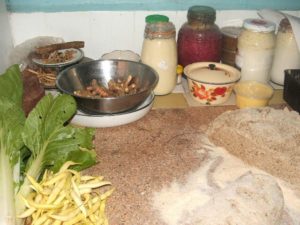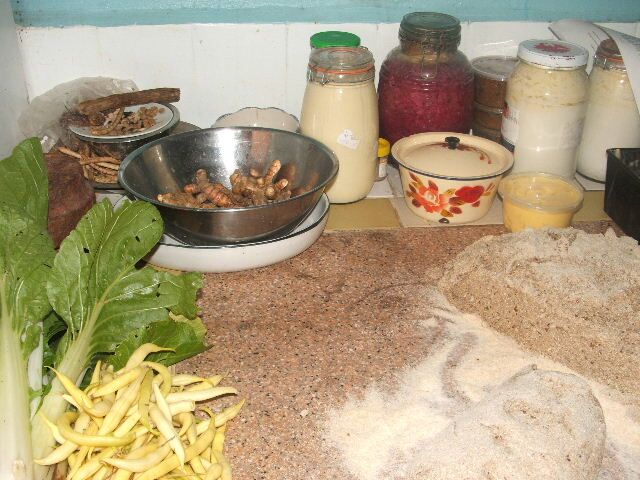Changing the Way We Look at Fermented Foods
 In times of old people naturally fermented their foods in order to extend the shelf life (if they had a shelf that is) Food tasted a bit different when it was naturally fermented and it added extra flavour to otherwise bland food.
In times of old people naturally fermented their foods in order to extend the shelf life (if they had a shelf that is) Food tasted a bit different when it was naturally fermented and it added extra flavour to otherwise bland food.
What they probably didn’t realise was that their health was enhanced because of these naturally fermented foods they ingested. Wild yeasts made the bread dough rise and milk was curdled to make curds and whey and these name but a few of the changes that fermentation makes to food.
Wow! Curdled milk really got miss Muffet excited as she sat on her tuffet eating her curds and whey.
I also have the results of curdled milk on my toast for breakfast – quark a soft spreading cheese. This is a very basic cheese but full of lactic forming bacteria that enhance the life within the nether regions. Take this a step further and make a more sophisticated ferment and you have a feta cheese to die for, or a melt in the mouth haloumi; now we’re talking!
Who said they didn’t like fermented foods ?
People usually think that sauerkraut and perhaps kimchi are the fermented foods on top of the list as they are so popular these days and rightly so – but what about your own fermented tomato sauce, fermented raisin chutney and the oh so sweet fermented fruit paste made of dates and prunes and seeds and nuts with a hint of ginger?
The fermentation world is an endless fermented sauce to discover and your imagination is the limit. If it is food then we will find a way to ferment it.
If it’s a beverage- there no end of recipes such as all the kvass (field drinks made from grains and vegetables) varieties around the farmers of the poorer countries. (Who said they are poor?) These people have it all figured out – they know all about good healthy food and it keeps them strong vibrant and healthy while coping with hard physical work under the tropical sun.
We can learn a lot from people that still grow and produce their own food because when you think of the most expensive food in the shops, it all comes originally from the peasant on the land. These humble people would have their eyes pop out of their head when they see the food they grow and ferment at home, for sale as gourmet foods in the delicatessen at premium prices.
Does that mean you can also create anything you like with fermentation of our foods and beverages? You bet!
All it takes is a little knowledge and forward planning and you will enjoy the good life right from your kitchen.
Fermented Bean Paste – This ferment is great for using in tacos as a refried bean mix and I also use it spread on my salad wraps.
What You Need:
A can of any beans cooked and drained or soaked, cooked dried beans
1 onion
3 garlic cloves, crushed and peeled
1 tablespoon sea salt or to taste
4 tablespoons sour whey
Method:
- Place the onion and the garlic cloves in the food processor.
- Add remaining ingredients and process until smooth.
- Place the bean mix into a large jar with a well fitted lid.
- Cover tightly and leave at room temperature for about 3 days before transferring to the fridge. Release the lid every now and then to release any built up gas.
Prepared legumes can also be fermented.
If you have some shop bought hummus you can value add it by fermentation.Simply stir in a couple of tablespoons of sour whey and stand at room temperature for two to three days before placing in the fridge.
You can use any other spices to jazz up the fermented bean paste including hot chillies, cumin and allspice.
It is important that you watch the beans as they ferment. The first bite always has a fizzy feel in the mouth, but don’t worry it is still good.
Try to trust your instincts and not your preconceived ideas of fermentation thinking that food has gone off. On the contrary, the fermented legumes are made much more digestible through the process of fermentation.
If you’d like to learn more about fermented foods, check out my upcoming seminar and workshop schedule here

